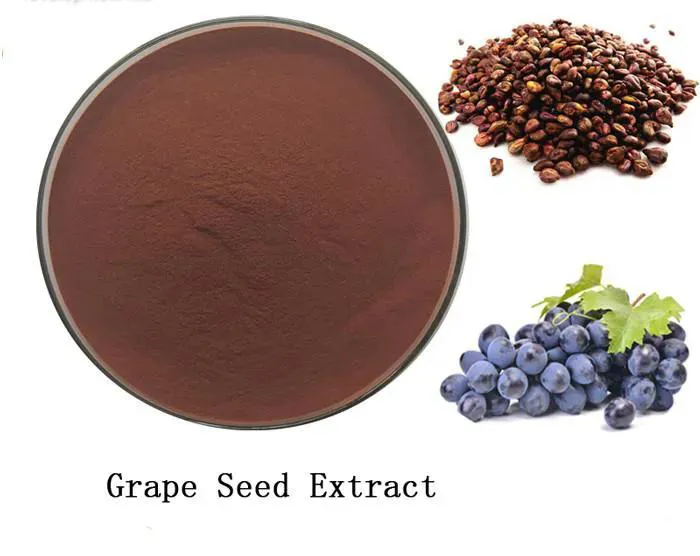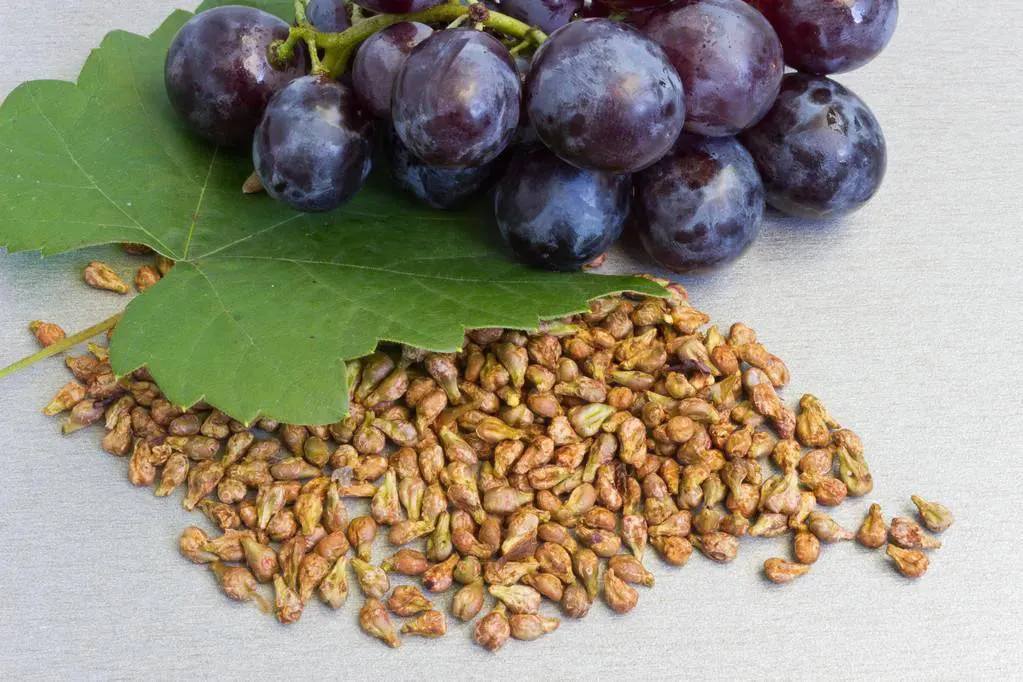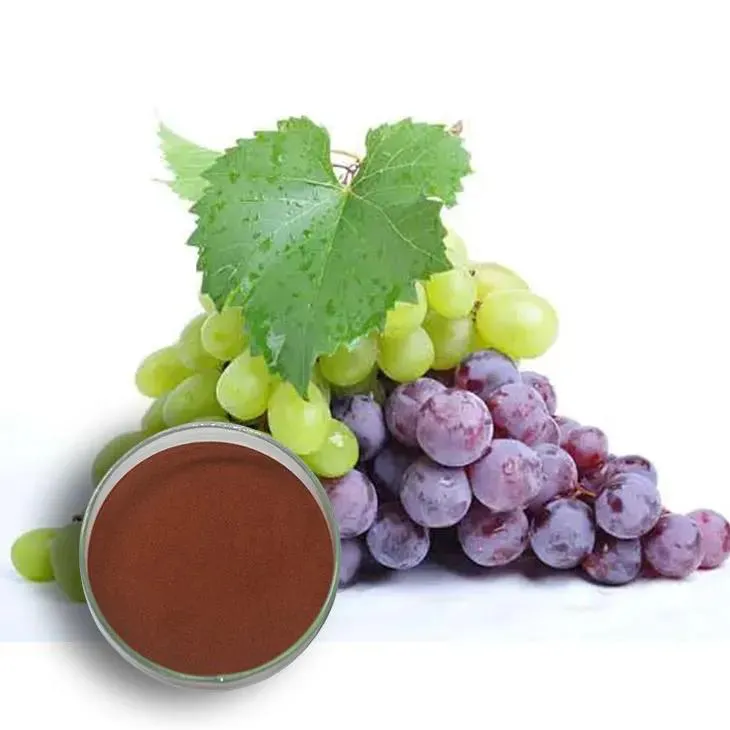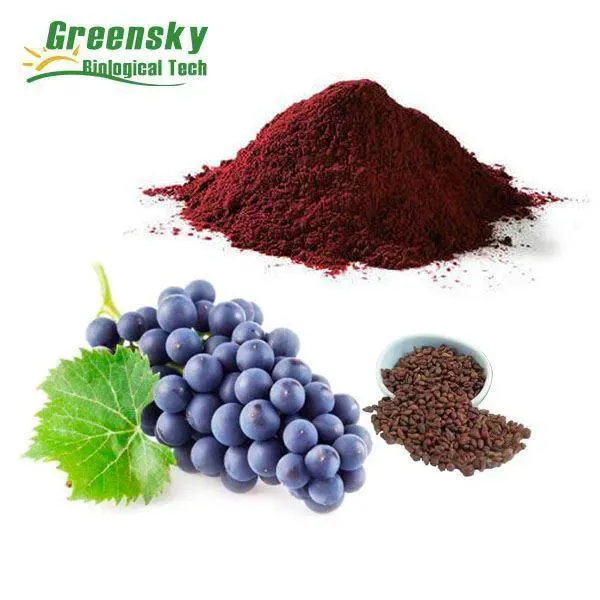- 0086-571-85302990
- sales@greenskybio.com
The Ancient Legacy of Grape Seed Extract: A Journey Through History and Tradition
2024-08-09

Introduction
Grape Seed Extract has a long and storied history that dates back to ancient times. It has been an important part of various cultures around the world, not only for its medicinal properties but also for its role in traditional practices. This article will take you on a journey through the history of Grape Seed Extract, exploring its origins in the vineyards of the past and its evolution to its current status.

The Origins in Ancient Vineyards
The story of Grape Seed Extract begins with the cultivation of grapes, which has a history of thousands of years. Grapes were one of the first fruits to be domesticated, and they were grown in many regions around the world.
Ancient Egypt
In Ancient Egypt, grapes were highly prized. They were not only used for making wine but also for their nutritional value. The Egyptians were likely aware of the potential benefits of grape seeds, although there is no direct evidence of the extraction process at that time. However, the fact that they consumed grapes in various forms suggests that they may have unknowingly benefited from the properties of grape seeds as well. Grape vines were often depicted in Egyptian art, indicating their importance in the society.
Ancient Greece
Ancient Greece was another region where grapes played a significant role. Greek winemaking was well - developed, and grapes were an integral part of their diet and culture. Greek philosophers such as Hippocrates, often considered the father of modern medicine, may have been aware of the health - promoting properties of grapes. While there is no clear indication that he specifically studied grape seed extract, his holistic approach to medicine and the importance he placed on diet suggest that he might have recognized the value of grapes, including their seeds.
Ancient Rome
The Ancient Romans expanded the cultivation of grapes throughout their vast empire. They were known for their elaborate wine - making traditions. Romans also used grapes in various culinary preparations. It is possible that they experimented with different parts of the grape, including the seeds, for medicinal purposes. Some historical records suggest that Roman soldiers were given a form of grape - based remedy to boost their health and endurance during long military campaigns.

Grape Seed Extract in Traditional Medicine
Over the centuries, grape seed extract has found its way into the realm of traditional medicine in different parts of the world.
Traditional Chinese Medicine
In Traditional Chinese Medicine (TCM), the concept of using natural substances for healing has a long history. While grapes are not native to China, they were introduced at an early stage. TCM practitioners may have recognized the potential of grape seed extract in promoting blood circulation, reducing inflammation, and enhancing overall health. Some traditional formulas might have included grape - related ingredients, although the exact use of grape seed extract in its pure form may not have been as well - defined as in modern times. Grape seeds, with their rich antioxidant content, would fit well into the TCM framework of balancing the body's energies and promoting good health.
European Folk Medicine
In European folk medicine, grape seed extract was also used for a variety of ailments. In rural areas, where access to modern medicine was limited, people relied on local plants and fruits for their health needs. Grape seeds were often used in poultices or infusions to treat skin conditions, such as wounds and rashes. The anti - inflammatory and antioxidant properties of grape seed extract would have been beneficial in these cases. Additionally, it was believed to have a positive effect on digestion and could be used to relieve stomach discomfort.

The Cultural Significance of Grape Seed Extract
Grape seed extract has not only been important in medicine but also in the cultural fabric of different societies.
Wine - Making Traditions
The process of winemaking is deeply intertwined with the history of grape seed extract. During winemaking, grape seeds are a by - product. However, in some traditional winemaking cultures, the seeds were not simply discarded. In certain regions of France, for example, there were beliefs that the seeds held some of the essence of the grape and could be used in secondary products. This led to the development of some local traditions where grape seed extract was used in small - scale, artisanal products related to the wine industry, such as in the production of certain vinegars or as an ingredient in regional cuisine.
Festivals and Rituals
Grape - related festivals are common in many grape - growing regions. These festivals often celebrate the harvest and the importance of grapes in the local economy and culture. In some of these festivals, there may be elements related to grape seed extract. For example, in some Italian festivals, there are traditional recipes that use grape seed oil (derived from grape seed extract) as a special ingredient. These festivals not only preserve the cultural heritage related to grapes but also promote the continued use and appreciation of grape seed extract in different forms.

The Modern Rediscovery of Grape Seed Extract
With the advancement of scientific research in recent centuries, grape seed extract has been rediscovered and its properties more precisely defined.
Scientific Research on Grape Seed Extract
Modern scientific research has revealed that grape seed extract is rich in antioxidants, such as proanthocyanidins. These antioxidants have been shown to have a wide range of health benefits, including protecting cells from oxidative damage, reducing the risk of chronic diseases such as heart disease and cancer, and improving skin health. Scientists have conducted numerous studies on grape seed extract, both in vitro and in vivo, to understand its mechanisms of action. These studies have led to a better understanding of how grape seed extract can interact with the human body at the molecular level.
Commercialization and Global Reach
As the scientific evidence for the benefits of grape seed extract has grown, it has become a popular ingredient in the health and wellness industry. It is now widely available in the form of dietary supplements, cosmetics, and even some functional foods. Companies around the world are manufacturing and marketing grape seed extract - based products. This has led to a global reach for grape seed extract, with consumers in different countries being aware of its potential benefits and incorporating it into their daily routines.
Conclusion
The journey of grape seed extract from the ancient vineyards to the modern - day market is a testament to its enduring legacy. It has been a part of human history for thousands of years, evolving from a simple by - product of winemaking to a highly valued ingredient in various industries. Its roots in different cultures and traditional medicine practices have contributed to its continued popularity and the growing interest in its scientific study. As we move forward, it is likely that grape seed extract will continue to play an important role in promoting health and well - being, while also remaining an important part of cultural traditions around the world.
FAQ:
What is the origin of grape seed extract?
Grape seed extract has its origin in the cultivation of grapes, which dates back thousands of years. Ancient civilizations such as the Greeks and Romans were among the first to cultivate grapes. Grape seeds, which were initially a by - product of winemaking, were gradually discovered to have potential value. Over time, different regions with a long history of grape cultivation, like France and Italy, have contributed to the exploration and understanding of grape seed extract.
How was grape seed extract used in ancient medicinal practices?
In ancient times, grape seed extract was used in various medicinal practices. For example, in traditional Greek medicine, it was believed to have anti - inflammatory properties and was used to treat certain skin conditions. In some Asian traditional medicine systems, it was used to improve blood circulation. Ancient healers may have used it in the form of poultices or infusions made from crushed grape seeds.
What are the traditional cultural associations with grape seed extract?
In some European regions, grape seed extract has been associated with the wine - making culture. Since grapes are a key ingredient in wine, the by - product of grape seeds also became part of the cultural heritage. In France, for instance, the whole process of grape cultivation, winemaking, and the potential uses of grape - related products like grape seed extract were passed down through generations. In other cultures, it was also used in religious or ceremonial contexts, symbolizing health and prosperity.
How has the use of grape seed extract evolved over history?
Initially, grape seed extract was mainly used in local and traditional ways within the regions where grapes were grown. As knowledge spread and scientific research advanced, its uses became more diverse. In modern times, it is not only used in traditional medicine - inspired applications such as for skin health and general well - being but also in the cosmetic and food supplement industries. The extraction methods have also become more sophisticated, allowing for a more concentrated and pure form of grape seed extract.
Are there any unique regional traditions related to grape seed extract?
Yes, there are. In some Mediterranean regions, grape seed extract has been used in local cuisine in small amounts for flavor and potential health benefits. In parts of Spain, for example, traditional recipes might include the use of grape - related products where grape seed extract could be a minor but important component. In some Middle Eastern regions, there are traditional remedies that incorporate grape seed extract for treating digestive problems.
Related literature
- The History of Grape Cultivation and Its By - Products"
- "Traditional Medicinal Uses of Grape - related Products"
- "Grape Seed Extract in European Cultural Heritage"
- ▶ Hesperidin
- ▶ Citrus Bioflavonoids
- ▶ Plant Extract
- ▶ lycopene
- ▶ Diosmin
- ▶ Grape seed extract
- ▶ Sea buckthorn Juice Powder
- ▶ Fruit Juice Powder
- ▶ Hops Extract
- ▶ Artichoke Extract
- ▶ Mushroom extract
- ▶ Astaxanthin
- ▶ Green Tea Extract
- ▶ Curcumin
- ▶ Horse Chestnut Extract
- ▶ Other Product
- ▶ Boswellia Serrata Extract
- ▶ Resveratrol
- ▶ Marigold Extract
- ▶ Grape Leaf Extract
- ▶ New Product
- ▶ Aminolevulinic acid
- ▶ Cranberry Extract
- ▶ Red Yeast Rice
- ▶ Red Wine Extract
-
Hesperidin
2024-08-09
-
Cat Claw Extract
2024-08-09
-
Coconut Water Powder
2024-08-09
-
Wheat Germ Extract
2024-08-09
-
Shikonin
2024-08-09
-
Genistein
2024-08-09
-
Milk Thistle Extract
2024-08-09
-
Chaste Berry Extract
2024-08-09
-
Peppermint Oil
2024-08-09
-
Okra Extract
2024-08-09





















